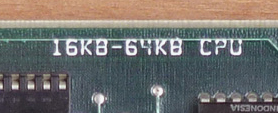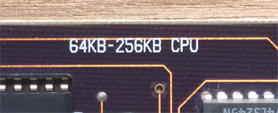Theretrogamingroom
New Member
A little about my system: Not too long ago, I picked up an IBM 5150 with keyboard, a couple of Okidata printers, and a bunch of manuals and disks (Including the Guide to Operations, BASIC, and DOS boxes), as well as a Princeton Monitor. Installed in the system are 2 5-1/4" Single Height Floppy Drives, a Single Height Hard Drive (Unknown size, probably around 5-10MB), and fully used expansion card slots, which is easy to do, given that there are only 5 slots (well, there are really only 2 slots available when you consider that 3 are used by graphics, floppy, and hard drive controller cards in my configuration). Aside from what I believe is a Color Graphics/Printer card (I received a color monitor, which theoretically the card is color?), floppy drive controller card, and hard drive controller card, there is a modem (Unknown manufacturer- black in color. I will probably uninstall this and replace it with a color graphics card for dual displays or a sound blaster card) and an AST SuperPak (Which should boost my ram to 640k, given that I have a later board with I believe 256k built in).
Anyways, I recently got around to restoring this. I had some concerns, given that it is so old. One of these was that something might blow up as it wasn't used in some time...
And guess what happened?
The second I flipped the power switch, a tantalum capacitor exploded (C13). I figured that would happen, given that the previous owners have long since left it unused, but what can you do? Anyways, although I would like to replace the capacitor, I don't have any soldering skills (yet), and because I would much rather leave the system as-is (and not potentially mess it more with bad soldering/messing with the inside of the system in general), I would much rather not make any changes, other than removing the cap. Is it possible to still use the system with it taken out? Could I simply snip it off and not worry about it?
Thanks
Anyways, I recently got around to restoring this. I had some concerns, given that it is so old. One of these was that something might blow up as it wasn't used in some time...
And guess what happened?
The second I flipped the power switch, a tantalum capacitor exploded (C13). I figured that would happen, given that the previous owners have long since left it unused, but what can you do? Anyways, although I would like to replace the capacitor, I don't have any soldering skills (yet), and because I would much rather leave the system as-is (and not potentially mess it more with bad soldering/messing with the inside of the system in general), I would much rather not make any changes, other than removing the cap. Is it possible to still use the system with it taken out? Could I simply snip it off and not worry about it?
Thanks


